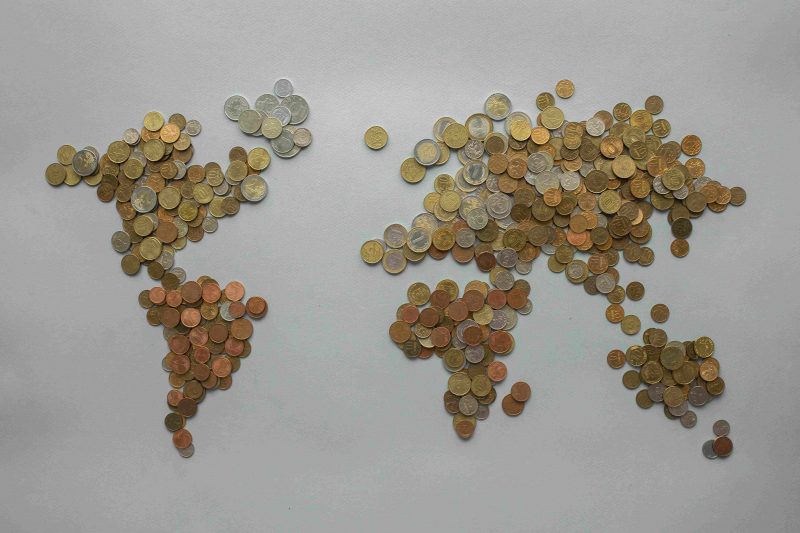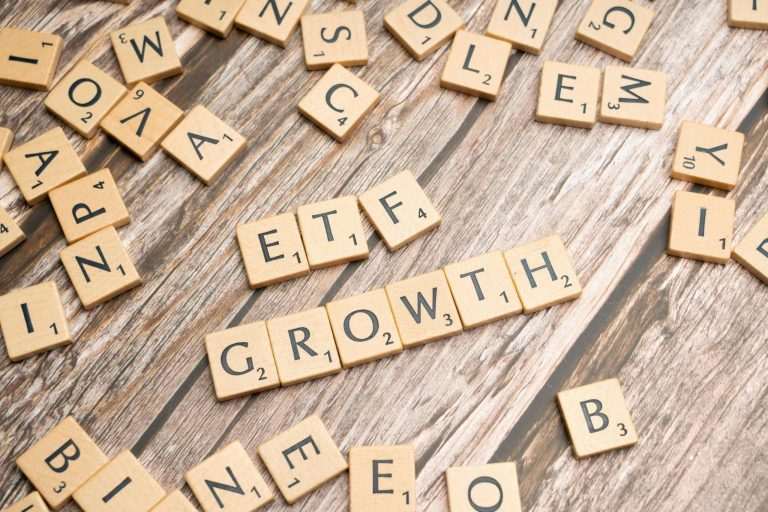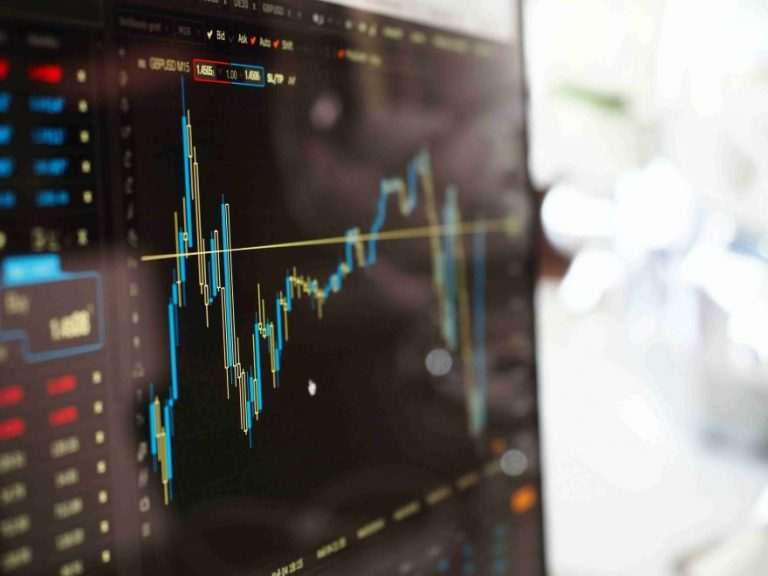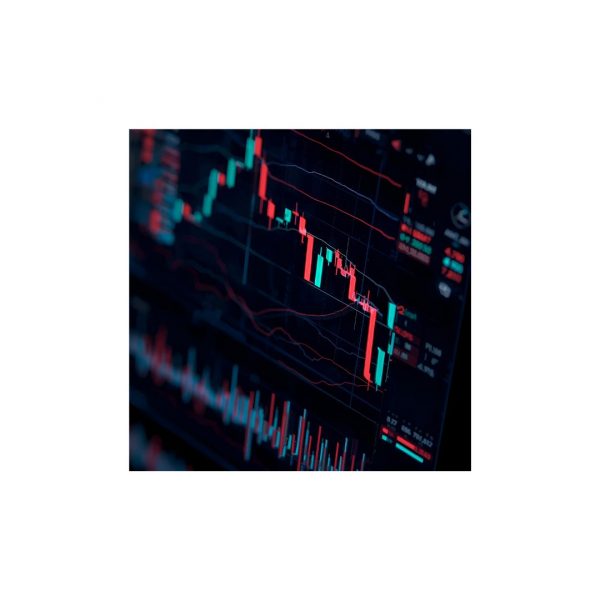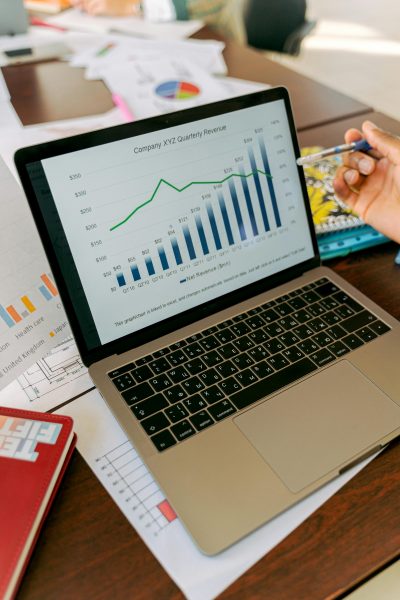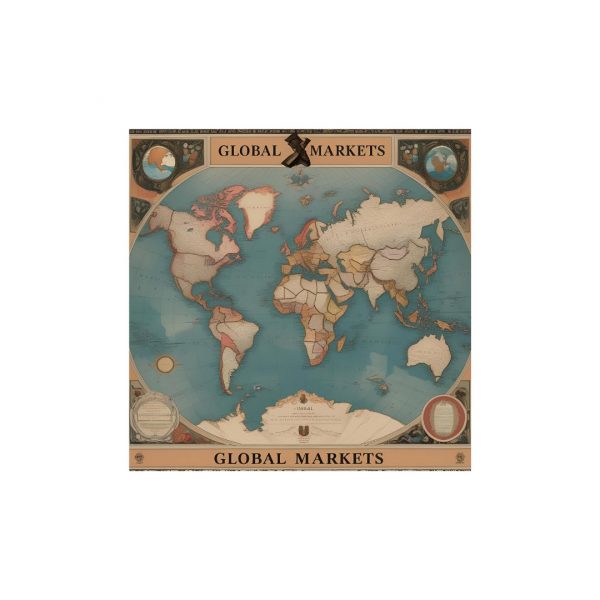How Global Economy Works
Table of contents
We often hear about growth, recession, inflation, or interest rates in the news. These concepts belong to macroeconomics, the study of the economy at national and global levels. Understanding macroeconomics might seem complicated at first glance. However, it’s fundamental because it directly influences our daily lives. This influence ranges from the price of bread to the cost of a mortgage, as well as our investment decisions. But exactly, how does the world economy work as a whole? Who are its main players, and what mechanisms drive it? In this introductory article, we’ll explore the basic principles to understand how the world economy works. We’ll also lay the groundwork to analyze key indicators in future articles.
Understanding the World Economy: A Simple Overview
When we talk about the world economy or global economy, we’re referring to the sum of all economic activities that happen worldwide. It’s not simply the total of national economies; rather, it’s the complex and interconnected system of production, distribution, and consumption of goods and services. This system links different countries together.
Think of the world economy as a vast and intricate “market” that transcends national borders. Nations trade with each other. Companies invest abroad. Capital moves from one country to another. People travel to work or do business. In other words, the world economy is made up of all transactions, exchanges, and economic relationships that involve multiple countries simultaneously.
Therefore, understanding how the world economy works means analyzing these complex interactions. These interactions unite different parts of the planet into a single economic system.
Fundamental Principles of the Global Economic System
Now that we’ve generally understood what the world economy is, let’s see how it works in practice. Understanding the basics of how the world economy works simply means observing how people (that’s us!), companies, and governments worldwide interact and exchange things. Even though it might seem like a huge and complicated system at first glance, in reality, it functions by following certain rules and rhythms that often repeat, much like a large engine.
Key Players in the World Economy
To understand how the world economy works, we need to consider that it’s not made up of a single entity, but rather of different parts that move and exchange things continuously. These parts, or “actors,” are primarily:
- Households (that’s us, the consumers): We offer our labor to businesses and use the money we earn to buy goods and services.
- Businesses (companies): They produce goods and services, hire people, and sell these goods and services to households, other businesses, or governments.
- Governments: By collecting taxes, they offer public services (roads, schools, healthcare), regulate the economy and, sometimes, invest.
- The Rest of the World: All other nations with which a country trades, exchanges money, or from which it receives or sends workers.
These actors don’t live in isolation; on the contrary, they are constantly in relation to each other. Households work for businesses. Businesses sell to households and governments. Governments collect taxes from both and offer services. Everyone exchanges goods and money with the rest of the world (importing and exporting). These continuous interactions and exchanges create the basic movement of the economy.
These primary actors are the engine of the economy. However, the system is also influenced and partly “managed” by larger institutions and mechanisms that define its rules and flows. We will explore these aspects further in the following sections.
The Basic Economic Cycle: How Economies Function
The economy isn’t static; on the contrary, it’s a continuous flow. To understand how the world economy works in its essence, we can think of a simple cycle primarily involving the Households and Businesses we discussed earlier.
Imagine a circuit:
- Households offer their labor to Businesses.
- Businesses, in return, pay wages to Households.
- Households use their wages to buy (consume) goods and services from Businesses.
- Businesses use the money earned from sales to produce new goods and services and invest (for example, by buying new machinery or expanding) to produce even more in future.
This cycle of Production → Income → Consumption → Production (and Investment) is the basic heartbeat of the economy. Naturally, governments and the rest of the world participate in this cycle with taxes, services, imports, and exports, making it more complex, but the central idea remains this continuous interaction to create and exchange value.
Global Supply and Demand Dynamics: How Prices Are Set
At the core of how the world economy works, just like that of a single country or even a local market, is the interplay between Supply and Demand.
Demand is the quantity of a good or service that people, businesses, or governments desire and can buy at a certain price. If a good is very popular and the price is low, demand will be high.
Supply, on the other hand, is the quantity of a good or service that businesses produce and are willing to sell at a certain price. If a good is cheap to produce and can be sold at a high price, supply will be high.
These two “drivers” meet in the market. Generally, when the Demand for something increases and Supply remains the same, the price tends to rise. Conversely, if Supply increases and Demand does not, the price tends to fall. This equilibrium between supply and demand determines the prices of things.
Example: The Price of Fruit Explained
Let’s consider a very common and simple example: the price of strawberries at the local market. If it’s peak season and there are plenty of strawberries available (High Supply), and the weather is good, so people happily buy them (High but balanced Demand), the price will be average. But if a hailstorm ruins the crops and there are few strawberries (Low Supply) and at the same time everyone in the city craves strawberries (Very High Demand), the price will skyrocket!
On the contrary, if for some reason no one buys strawberries and the seller has many that are about to spoil, they will lower the price to sell them (High Supply, Low Demand). This same simple principle, of how much people desire something and how much of that something is available, works on a large scale. This even applies to goods like oil or grain worldwide, influencing global prices.
Therefore, the interaction between overall demand and overall supply on a planetary level drives most economic movements and the prices of goods you buy every day.
The Crucial Role of International Trade in the World Economy
A fundamental element that distinguishes the world economy from that of a single country is international trade. This simply refers to the exchange of goods and services that occurs across borders between different nations.
But why is it so important? Think about it: no country in the world produces everything it needs or wants. Some countries are good at producing technology, others food, and still others raw materials like oil. Consequently, exchanging products (exporting what you produce well and importing what you don’t produce or what costs less to buy elsewhere) allows everyone to have more things available at better prices.
International trade also increases competition (domestic companies must compete with foreign ones, which can lead to improved quality and lower prices) and fosters specialization (countries tend to concentrate on producing what they do best or what costs them less).
Beyond the trade of goods and services, the global market today is also deeply interconnected by vast flows of capital and transnational investments. Companies not only sell products abroad but also invest in factories or acquire other businesses in different countries. Furthermore, investors can buy stocks or bonds on exchanges worldwide. This continuous exchange of goods, services, and money creates a global economic interdependence that makes the system dynamic yet also complex.
In summary, international trade is a powerful glue that binds national economies, creates interdependence, and contributes to global growth, even though it can sometimes create challenges and debates (such as import tariffs).
Key Players Who Manage the Global Economy
We’ve seen that the world economy is based on interactions and exchanges among various actors. But who exactly are these actors, and what role do they play in driving or influencing the economy on a large scale? Understanding the main players is fundamental to comprehending why certain economic events occur and therefore to having a more complete picture of how the world economy works. Principally, we can identify three broad categories of players that have a significant impact.
Governments and Fiscal Policy in the World Economy
A very important player in the world economy is the Government of each individual country. Governments aren’t just those who make laws; rather, they have an active and fundamental role in the economy. Their primary tool for influencing the economy is Fiscal Policy.
What is Fiscal Policy? In short, it’s about how governments collect money (through taxes) and how they spend it (public spending).
When governments increase public spending (for example, building new roads, schools, hospitals) or reduce taxes, generally the goal is to boost the economy. This encourages people to spend more and businesses to invest. This can help create jobs.
Conversely, when they reduce spending or increase taxes, often the objective is to slow down an economy that’s growing too quickly (to avoid excessive inflation) or to reduce public debt.
Therefore, government decisions on taxes and public spending have a direct impact on how the world economy works. They influence available wealth, investments, and growth in their respective countries, and consequently on the interconnected global economy.
Central Banks: Monetary Policy and Economic Impact
Alongside Governments, another incredibly powerful player that influences how the world economy works are Central Banks. Every major economic area has its own (for the Eurozone, there’s the European Central Bank – BCE; in the USA, the Federal Reserve – FED, and so on).
Their primary tool is Monetary Policy. Unlike fiscal policy, which deals with taxes and public spending, Monetary Policy concerns the management of money in circulation and, above all, the control of “base” interest rates.
When a Central Bank lowers interest rates, it makes borrowing money less expensive (for households and businesses). This tends to encourage people to spend more and businesses to invest, giving a boost to the economy.
Conversely, when a Central Bank raises interest rates, it makes borrowing money more expensive. This tends to curb spending and investments, which is useful for slowing down an economy that’s “running too fast” and for controlling inflation (the general increase in prices).
The Creation of Money and Fractional Reserve: How it Works
This is where the role of Central Banks ties into the deeper functioning of money. Today, money is no longer tied to gold; its quantity is much more elastic. Central Banks don’t just print physical banknotes, but they influence the creation of money through the banking system. This happens thanks to fractional reserve banking: commercial banks don’t have to keep all their clients’ money in deposit, but only a small percentage as a “reserve.” The rest is lent to other clients.
This loan-and-deposit process means that banks, in effect, “create new money” every time they issue a loan. This financial leverage mechanism allows the money supply to expand far beyond the physical currency in circulation, supporting economic development. Trust in the system is the foundation of this mechanism. As long as loans are repaid and not all clients withdraw their deposits simultaneously, the system functions. However, when trust erodes or loans are no longer honored, the system can experience significant crises, such as the subprime mortgage crisis in 2008, which highlighted the fragility of excessive monetary expansion not supported by the real economy. [“For a detailed understanding of fractional reserve banking, money creation, and their role in financial crises, read our dedicated article.”]
Therefore, Central Bank decisions on interest rates have an enormous impact on the cost of money, prices, and economic activity, influencing the economy of a country or area, and consequently, the global economy. They act independently of governments, even though they work towards similar goals such as price stability and full employment.
International Organizations: Shaping the Global System
Beyond national governments and Central Banks, there are institutions that play a coordinating and regulatory role at the global level. Organizations like the International Monetary Fund (IMF) and the World Bank provide financial support, economic advice, and technical assistance to countries in difficulty, aiming to promote financial stability and reduce poverty. The World Trade Organization (WTO), on the other hand, deals with setting the rules for international trade, facilitating exchanges, and resolving disputes between nations. These organizations, along with forums like the G7 and G20, work to influence global economic policies and prevent systemic crises, acting as indirect “managers” of the world economic system.
Businesses and Households: Driving the Global Economy
We’ve talked about the big decision-makers: Governments and Central Banks. Nevertheless, the world economy wouldn’t move without the daily actions of millions of Businesses and billions of Households (that is, us!).
Businesses, with their decisions on what to produce, how much to produce, how many employees to hire, and where to invest, are the engine of production of goods and services. Furthermore, they are the ones who create jobs.
Households, in turn, are the workers who offer their labor to businesses, earning an income. But, above all, they are the consumers who, with their purchasing decisions (what to buy, how much to spend, what to save), drive much of the demand for goods and services.
In practice, every time a company decides to launch a new product, to open a new factory, or to hire someone, or every time a family decides to buy a car, to go grocery shopping, or to put aside savings, it is influencing the big gears of the economy. So, even if they don’t make laws or print money, the aggregate decisions of Businesses and Households are the true driving force of how the world economy works.
Why Understanding the World Economy Matters to You
You might think that macroeconomics and its mechanisms are distant topics, only for economists or financiers. However, understanding how the world economy works isn’t a purely theoretical exercise; on the contrary, it has a direct and concrete impact on your daily life and your financial decisions. From your grocery shopping to your savings, you are constantly influenced by what happens in the global economy. For this reason, it’s worth taking some time to understand these fundamental mechanisms.
Direct Impact of the World Economy on Daily Life
Understanding how the world economy works might seem an abstract concept, but its dynamics have very concrete effects on aspects of your life. These might be aspects you don’t directly link to the “big economy.”
Think, for example, about prices: why does the cost of gasoline or coffee change? As we’ve seen, it depends on global supply and demand (wars, producer decisions), but also on government policies (fuel taxes) and central banks (which influence the value of money). Therefore, inflation, the general increase in prices, is a macroeconomic phenomenon that directly empties your wallet.
Another example is work: the economic growth or recession of a country, influenced by international trade, business investments, and government and central bank policies, has a direct impact on job creation or loss and the ease of finding an employment.
Finally, consider the money you borrow or save: interest rates decided by Central Banks directly influence how much a mortgage or personal loan costs you, as well as how much your savings earn in a checking account or certain low-risk investments.
Understanding these connections helps you not just passively experience economic changes. Instead, it allows you to grasp their causes and, consequently, to make more informed decisions in your daily money management.
World Economy’s Impact on Investments and Personal Finance
If you’re interested in investments or simply want to manage your money better, understanding how the world economy works becomes even more important. Macroeconomic conditions are, in fact, one of the main factors influencing the performance of financial markets.
For example:
- When the global economy grows (GDP is increasing, unemployment is low), companies tend to earn more. This often translates into rising stock markets.
- Conversely, during a recession, stock markets tend to fall.
- Interest rates decided by Central Banks directly influence the value of bonds and the cost/convenience of mortgages and loans. They also affect the attractiveness of holding cash or investing in riskier assets.
- Inflation erodes the purchasing power of your savings, thus prompting you to seek investment forms that protect your capital.
- Currency fluctuations (for example, Euro against Dollar), which depend on many global economic factors, can influence the value of your investments if you buy ETFs or shares quoted in currencies different from your own.
Understanding the macroeconomic picture provides you with the tools to interpret economic news. It helps anticipate (as much as possible) certain scenarios and, consequently, make more conscious investment decisions. It doesn’t mean having a crystal ball, clearly, but it means basing your choices on a deeper understanding of the factors that move the markets and your personal finances in the global context.
Key Economic Indicators: Monitoring Global Economic Health
Understanding how the world economy works in broad terms is a great start. But how do economists and analysts figure out if a country’s or the world’s economy is doing well or poorly at a given moment? They use “measurement” tools, real “thermometers” of the economy, called economic indicators. Among the most important, we find:
- The GDP (Gross Domestic Product), which measures the wealth produced.
- The Unemployment rate, which measures how many people looking for work cannot find it.
- Inflation, which measures the general increase in prices.
These are just some of the fundamental indicators. Analyzing them in detail allows us to understand the economy’s health and cautiously predict its possible future directions. For this reason, in the upcoming articles of this macroeconomics series, we will delve deeper into the meaning and importance of these and other key indicators. This will give you the tools to interpret them effectively.
Conclusion: Understanding the World Economy
In this introductory article, we took a first step to understand how the world economy works. We’ve seen that it’s not a single entity, but a complex system where Households, Businesses, Governments, and Central Banks interact. This system is guided by the principles of Supply and Demand and linked by International Trade and monetary flows.
We also discovered that, despite it might seem like a distant topic, macroeconomics has a direct and daily impact on our lives. This impact ranges from the prices of goods to job opportunities, and above all, it influences our investment decisions and personal finance management.
Understanding how the world economy works in broad terms gives you greater awareness of the world around you. It also enables you to make more informed financial choices. Of course, there’s still much to explore, such as the detailed analysis of various economic indicators. For this reason, I invite you to follow the next articles in this series, where we will delve deeper into these crucial topics.
